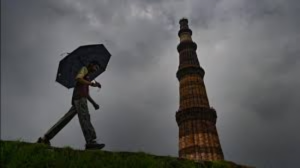Delhi Breathes Its Cleanest July Air in Years
July 2025 Air Quality Review
Introduction
Summer in Delhi often brings worries about dust, smog, and health risks. But this July, something unusual happened. The city saw its cleanest air in recent memory. For many residents, stepping out felt easier on lungs and mood. In this article, we explore how and why Delhi’s air improved, what it means for daily life, and how this hopeful trend can last.

Early Signs of Cleaner Skies
Just after monsoon began, monitors around Delhi showed a steady drop in PM2.5 and PM10 levels. These tiny particles, which cause breathing trouble, fell below national safe limits for many days. People noticed blue skies and sunrises without the usual orange haze.
- Average PM2.5 fell by 25–30% compared to last year
- Daily Air Quality Index (AQI) stayed in “moderate” or “satisfactory” bands for most of July
- Fewer school closures and public health alerts than in past Julys
Small wins like these made big smiles for joggers, cyclists, and office-goers who missed clear mornings.
Key Factors Behind the Improvement
Several influences came together to give Delhi a breathing space:
- Early and Heavy Monsoon Rains
- Frequent post-monsoon showers washed away dust on roads and construction sites.
- Humidity settled airborne particles, making them fall quicker.
- Stricter Local Measures
- Construction activity faced tighter dust-control rules.
- Old diesel vehicles saw more fines for emissions tests.
- Regional Weather Patterns
- Westerly winds blew less polluted air from the hills.
- Stable atmospheric layers prevented dust from rising into the city.
- Community Efforts
- Citizens planted trees along busy roads.
- Schools and offices held awareness drives on anti-idling and clean energy.
Each step alone helped a bit. Together, they led to a noticeable change in the air we all share.
Real-Life Stories
- Morning Runners: Geeta, a fitness coach in South Delhi, said she used to cough lightly after each run. By mid-July, she felt no post-run wheeze.
- School Teachers: At a North Delhi school, teachers paused indoor assemblies less often. They saw happier faces during breaks.
- Shopkeepers: Street vendors near ISBT reported more foot traffic. Shoppers stayed longer, enjoying the cool, fresh breeze.
These stories show small personal gains that add up city-wide.

Lessons for Lasting Change
To keep this progress going, Delhi can focus on:
- Green Transport
- Push more electric buses and e-rickshaws.
- Add bike lanes and shared-cycle stations.
- Dust Control
- Cover construction sites with nets.
- Water spraying on busy roads during dry spells.
- Public Engagement
- Apps for real-time AQI updates.
- Neighborhood clean-up drives every month.
- Regional Collaboration
- Work with nearby states to reduce crop-burning smoke.
- Coordinate on industrial emission standards.
These actions can turn a good July into a cleaner year.
Conclusion
Delhi’s cleanest July air in years brings hope. It shows what rains, rules, and community can do together. But one month does not solve all problems. Continued efforts by government, businesses, and citizens are key. When each of us chooses cleaner transport, supports green policies, and stays aware, the clear skies we enjoyed in July can become our new normal.
Let’s build on this moment and help Delhi breathe easy every day.
#TRANDING